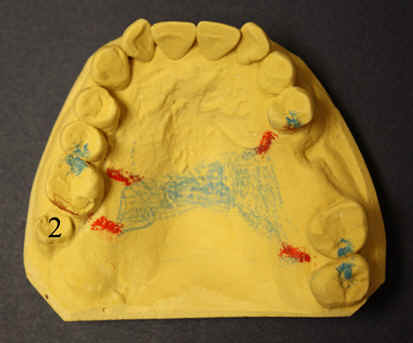 |
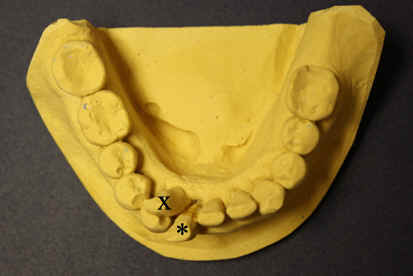 |
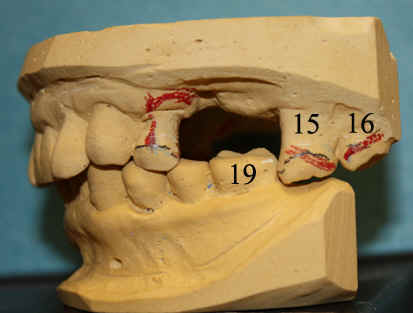 |
| Fig.1 | Fig.2 | Fig.3 |
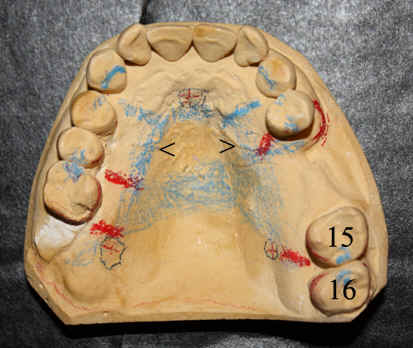 |
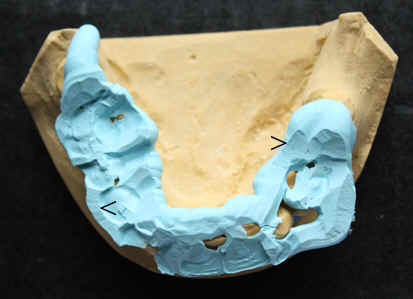 |
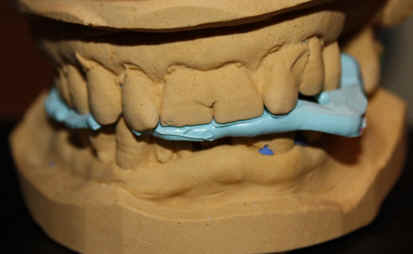 |
| Fig.4 | Fig.5 | Fig.6 |
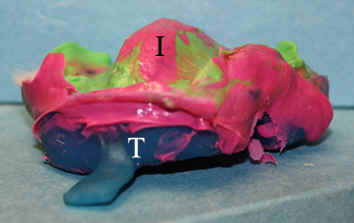 |
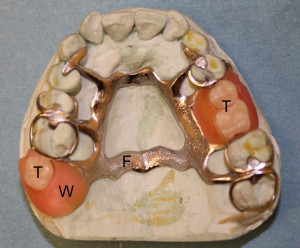 |
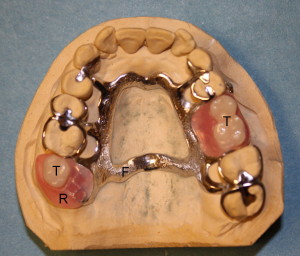 |
| Fig.7 | Fig.8 | Fig.9 |
 |
 |
 |
| Fig.1 | Fig.2 | Fig.3 |
 |
 |
 |
| Fig.4 | Fig.5 | Fig.6 |
 |
 |
 |
| Fig.7 | Fig.8 | Fig.9 |
Dental Education Lecture: Partial Denture Design
Mr. Qi has lost two teeth on the top (Fig.1). Another tooth (#2) is broken down and needs to be extracted. So he needs a partial denture for the upper jaw. Fig.2 shows his bottom teeth. The front teeth are very crowded. We plan to take out the tooth with X. The tooth labeled with * needs root canal and splinting. These are necessary procedures before making upper partial denture.
To make a partial denture fit, we need to analyze patient's condition and make custom design. Fig.3 and 4 show drawings made with black, red and blue pencils so that the technician knows exactly how to make a partial denture what the doctor desires. Compare Fig. 4 with Fig.8, 9. The latter show the final products.
When we lose teeth for too long, the opposing teeth grow long. For example, the teeth #15 and 16 grow down so much that they almost touch the gums of the lower jaw (Fig.3). The tooth #19 grows up a little bit, probably because the opposing tooth has not lost for too long. The more change after extraction, the more difficult it is to design and finally more difficult to wear the partial denture. Anyway, we need to replace missing teeth as soon as possible.
The more teeth we lose, the more unstable our bite is. To make a well-fit partial denture, we should also make a bite registration in the mouth. The bite registration is made with a rubber-like material. After trimming (arrowheads), it fits the lower model (Fig.5). Finally the bite registration allows the upper and lower models fit to each other precisely (Fig.6). The other important aspect of making good partial denture is to take a precision impression with custom-made impression tray (T, Fig.7) and double layered impression (I) materials.
After making framework (F, Fig.8), the technician set up false teeth (T) in red wax (W). The intermediate partial denture returns to dental office. The patient tries in to see whether it is fit and determine whether the color of the false teeth match that of your natural teeth. If everything is ok, we send the intermediate partial denture back to lab and get the final product (Fig.9). As you may see, the used-to-be red wax changes into beautifully-looking pink resin (R, acrylic). With good design, preparation and processing, the partial denture needs minimal adjustment. The patient gets used to it very quickly.
Xin Wei, DDS, PhD, MS 1st edition 11/22/2009, last revision 09/28/2012